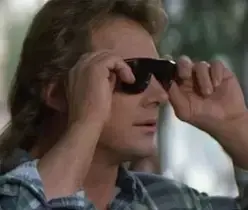The 1994 James Cameron film True Lies starring Arnold Schwarzenegger was recently re-released in Ultra HD 4K disc format giving viewers the opportunity to watch these classic films in unprecedented detail.
Not only True Lies but Cameron’s The Abyss and sci-fi classic Aliens were also released on Ultra HD Blu-ray with Geoff Burdick, senior vice president of Lightstorm Entertainment, who tells The New York Times that he thinks they “look the best they’ve ever looked.”
But not everyone agrees.
“It just looks weird, in ways that I have difficulty describing,” the journalist Chris Person tells The Times. “It’s plasticine, smooth, embossed at the edges. Skin texture doesn’t look correct. It all looks a little unreal.”


As long as a good job is done I think AI upscaling the movies and removing compression artefacts and such is amazing. And people who don’t like it can still watch the OG version.
Yeah honestly this is exactly the type of thing that AI is good for – creating pixel resolution where it once did not exist. It’s just what definition of AI… We’ve been using, relying, on this type of tech for over a decade now it’s simply just under the scrutiny of AI now. Let me preface, there are really terrible upscales out there. And the article itself even tries to clarify the difference between enhanced and generative, enhanced meaning upscaling resolution and creating detail, and generative meaning re-creating the scene as an upscaled version. The issue is that enhanced upscaling is still a bit of work, as it’s the digital version of manually going through each frame and painting it. Thereby, generative AI is cheaper and of course a giant company would spend resources towards making the worst-best version of that over the best-best version of something else…
The former, enhancing, can be done quick and dirty, but it’s often done fairly checked for reproduction – things like dark vs. light scene, fog, depth of field – these things can be affected by the upscale and there are ways to make each “scene” look really good, it just can’t be all done at once. This is why live action upscales haven’t been and still aren’t super great, because it’s often done the lazy way with a one full pass upscale.
The latter, generative, doesn’t matter how much effort you put into each “scene” manually. Because it’s recreating what exists instead of expanding what exists, it is pretty much always going to have this uncanny valley effect. As noted by others, you can literally see the Generative AI patterning in his hair and on the smoothing on his face. It’s bad. Enhanced upscaling does not do this whatsoever.
In regards to relying on it upscaling, Content Aware Fill has been around since 2010. It never got looked down on until it got shifted to Stable-Diffusion Aware Fill. Genuinely, this was a precursor because while the standard usecase is of course to remove a bird from a pretty sky picture, another thought became to increase the image size and content aware fill the background space. Rarely was it looked down on (especially since it did often need manual interventions to touch it up.) Now you do the same thing with Stable Diffusion but with copyright infringement. I don’t disagree with that, sentiment, but I do not much care for how they are equated.
Anyway, similarly, programs like Topaz and tons of other image and video upscalers have been around using CPU conversions, it only truly boomed alongside AI because it uses TensorCores and then easily translated from developing CUDA upscaling into more AI focused upscaling algos (laymans, not exact for brevity.) Only in the last couple, maybe single year has Generative AI really been “used” to upscale, and honestly hasn’t really been available on its own until recently. I would hazard a guess that these upscales are more of a hobby project and sharing them than
All this to say, there are some really good upscales from 4 years ago that are worth the time of day, if that is what you are interested in. Generally speaking, live action is harder and not as good. As another mentioned, animated works are generally pretty good, as it’s basically upscaling to reduce visual aliasing – the biggest visual defects from animation upscaling are larger visible chunky blocks, and if it’s done poorly shifting linework (I personally never had this issue when I did my upscaling projects). And I should further clarify I suppose – everything mentioned is hobbyist work. I’m not talking about the LucasFilms Enhanced 4k stuff, nor any of that sort of thing.
Simply taking the OG video file, segmenting it, and enhancing each version and resplicing it. Really been on it for a long time and it’s insane to me that this is the approach that Hollywood goes for.